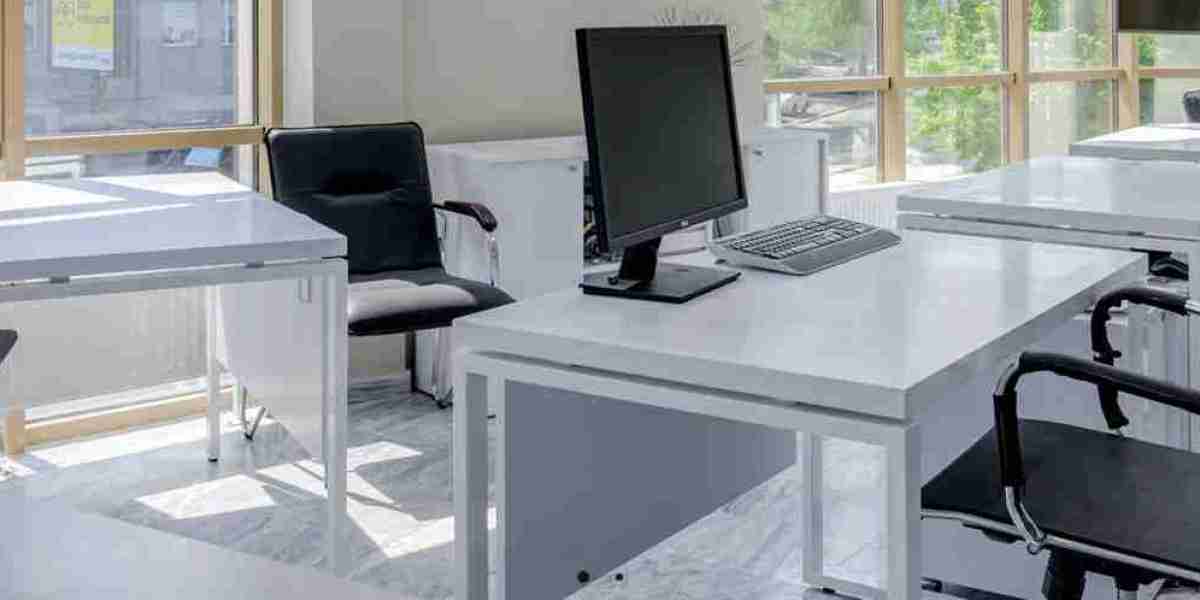Creating a comfortable and efficient office environment is crucial for productivity and employee well-being. With the right combination of furniture, ergonomic practices, and smart design choices, you can transform your workspace into a hub of efficiency and comfort. This guide will help you navigate the essential elements to consider when designing an office that meets these goals.
1. Ergonomic Furniture: The Foundation of Comfort
Investing in ergonomic furniture is the first step towards a comfortable and efficient office.
- Ergonomic Chairs: Choose chairs that support the natural curve of the spine, with adjustable seat height, lumbar support, and armrests. The ErgoMotion Chair is an excellent example, offering dynamic support that adapts to the user’s movements.
- Adjustable Desks: Sit-stand desks, such as the FlexiDesk 2024, allow employees to switch between sitting and standing positions throughout the day, reducing the risk of sedentary-related health issues.
2. Optimal Desk Setup: Enhancing Efficiency
The layout and organization of your desk can significantly impact your work efficiency.
- Monitor Positioning: Place your monitor at eye level, about an arm’s length away, to reduce neck strain. Monitor stands or adjustable arms can help achieve the ideal positioning.
- Keyboard and Mouse: Keep your keyboard and mouse at a height where your elbows remain at a 90-degree angle. Consider ergonomic keyboards and mice that minimize strain on your wrists.
3. Lighting: Boosting Productivity and Reducing Strain
Proper lighting is essential for a productive and comfortable workspace.
- Natural Light: Maximize the use of natural light by positioning desks near windows. Natural light improves mood and reduces eye strain.
- Task Lighting: Use adjustable desk lamps to provide focused lighting for detailed tasks. LED lamps with adjustable brightness levels are a great choice for reducing glare and shadows.
4. Climate Control: Maintaining a Comfortable Temperature
A comfortable temperature is crucial for maintaining focus and productivity.
- Temperature Regulation: Ensure your office has a reliable HVAC system to maintain a consistent temperature. Personal fans or heaters can also help individuals adjust their immediate environment.
- Air Quality: Good ventilation and air purifiers can improve indoor air quality, reducing allergens and pollutants that can affect comfort and health.
5. Noise Control: Creating a Quiet Work Environment
Managing noise levels is vital for maintaining concentration and reducing stress.
- Acoustic Panels: Install sound-absorbing panels on walls and ceilings to reduce ambient noise.
- White Noise Machines: Consider using white noise machines to mask distracting sounds in open-plan offices.
6. Organization and Storage: Reducing Clutter
A well-organized workspace enhances efficiency by reducing distractions and making it easier to find necessary items.
- Desk Organization: Use desk organizers, trays, and cable management systems to keep your workspace tidy.
- Storage Solutions: Invest in filing cabinets, shelves, and storage bins to store documents and supplies neatly. Modular storage units can be customized to fit your specific needs.
7. Break Areas: Promoting Relaxation and Collaboration
Designate areas for employees to take breaks and recharge.
- Comfortable Seating: Furnish break areas with comfortable seating options like couches and lounge chairs.
- Amenities: Provide amenities such as coffee machines, snacks, and water coolers. Break rooms equipped with these features encourage employees to take necessary breaks, boosting overall productivity.
8. Personalization: Making the Workspace Inviting
Allowing employees to personalize their workspaces can increase comfort and satisfaction.
- Personal Items: Encourage employees to bring personal items such as photos, plants, and decor to their desks.
- Flexible Workspaces: Provide options for different work environments, such as quiet zones, collaborative areas, and private meeting rooms.
9. Technology Integration: Streamlining Workflow
Incorporating technology into your office setup can enhance efficiency and connectivity.
- Tech-Friendly Desks: Choose desks with built-in cable management, USB ports, and power outlets to keep devices charged and organized.
- Collaboration Tools: Equip meeting rooms with video conferencing systems, interactive whiteboards, and high-speed internet to facilitate seamless communication and collaboration.
10. Health and Wellness: Supporting Employee Well-Being
Prioritizing health and wellness can lead to a more productive and happy workforce.
- Exercise Opportunities: Provide standing desks, balance boards, or under-desk ellipticals to encourage physical activity throughout the day.
- Mental Health Support: Create quiet rooms or meditation spaces where employees can take short breaks to relax and de-stress.
Conclusion
Creating a comfortable and efficient office environment involves a combination of ergonomic furniture, optimal desk setup, proper lighting, climate control, noise management, organization, break areas, personalization, technology integration, and health and wellness support. By focusing on these key elements, you can design a workspace that not only enhances productivity but also promotes overall well-being and satisfaction among employees. Implement these strategies to transform your office into a space where comfort and efficiency go hand in hand.








